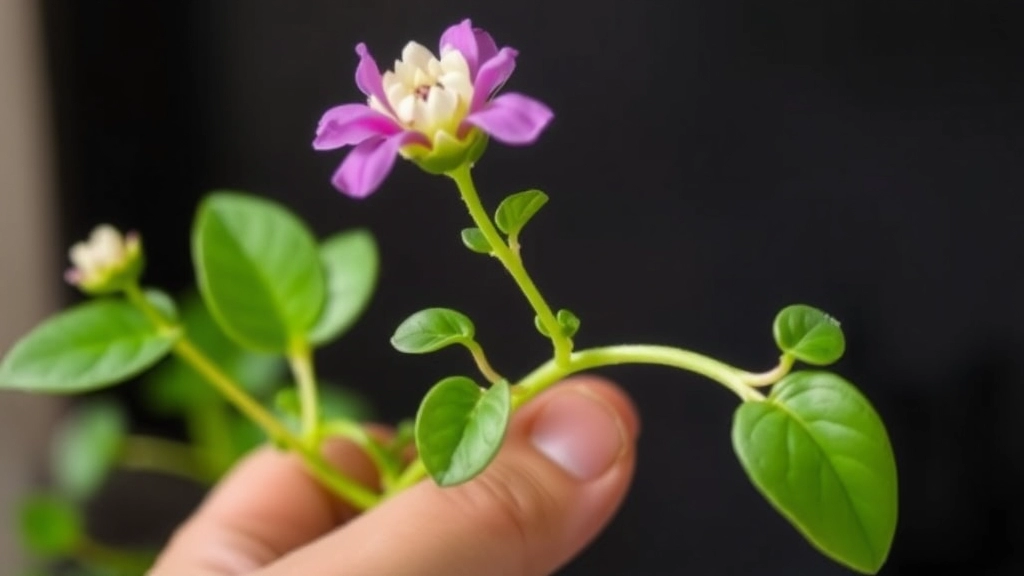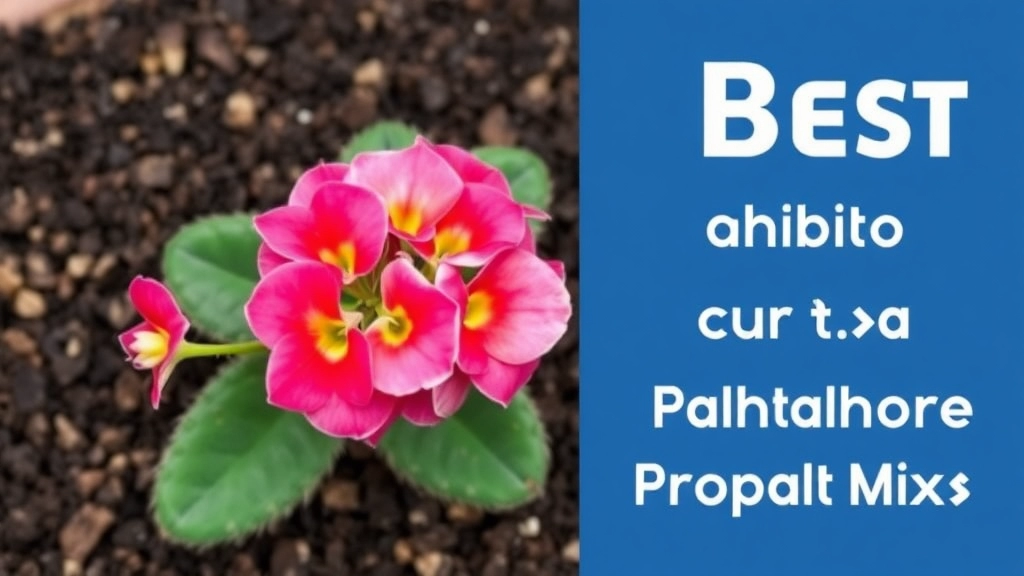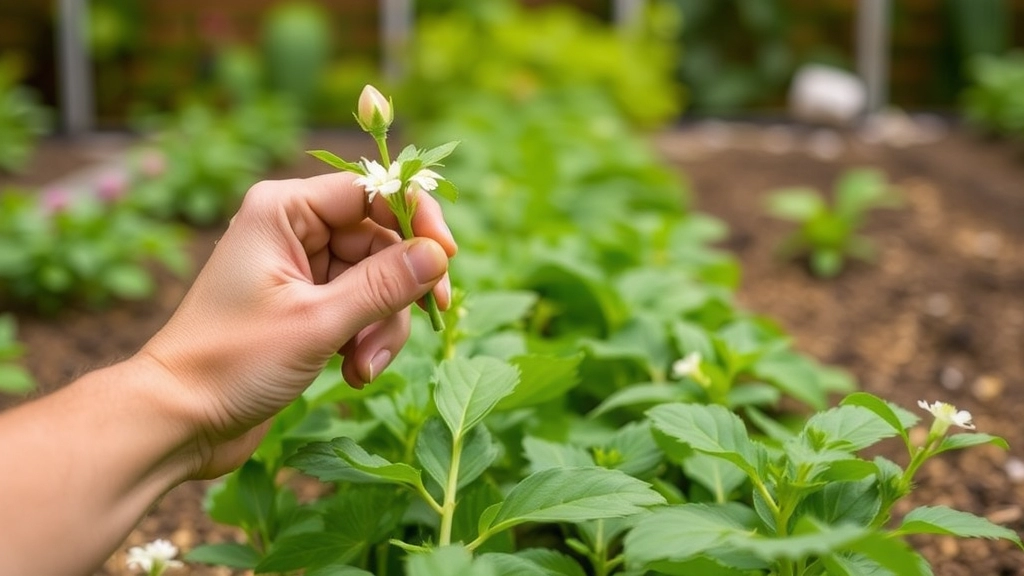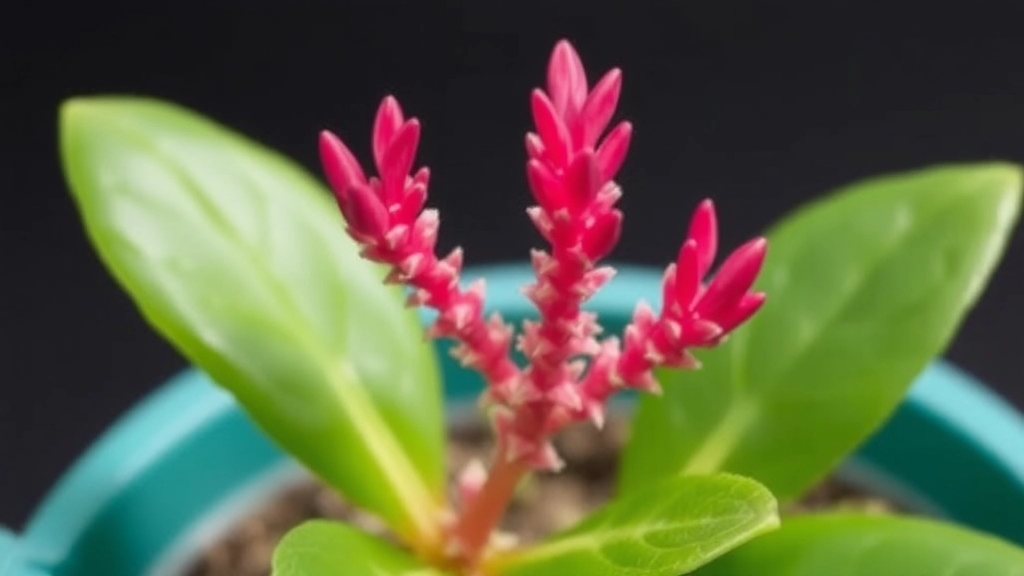Propagating Kalanchoe Beharensis ‘Fang’
Looking to propagate your Kalanchoe Beharensis ‘Fang’? You’ve come to the right place. Propagating this unique succulent can be a rewarding experience if you follow the right steps. Whether you’re using stem cuttings or leaf propagation, understanding the best practices will help you succeed.
In this guide, we’ll dive into various propagation methods, from choosing the right soil and potting mix to ensuring proper watering and light conditions. We’ll also cover common mistakes to avoid and tips for post-propagation care to ensure your Kalanchoe Beharensis ‘Fang’ thrives. Let’s get started!
Are you looking to expand your collection of Kalanchoe Beharensis âFang’?
This unique succulent, known for its striking foliage, can be easily propagated using various methods.
Key Propagation Methods:
– **Stem Cuttings**
A popular method for Kalanchoe propagation.
Involves taking a healthy stem and allowing it to root.
– **Leaf Propagation**
Another effective method.
Utilises individual leaves to grow new plants.
– **Offsets**
Some Kalanchoe varieties produce offsets or “pups”.
These can be separated and planted directly.
Each method has its own advantages and can yield successful results if done correctly. For more detailed guidance, you can refer to the [care and propagation of Kalanchoe Beharensis](https://planthq.org/care-and-propagation-of-kalanchoe-beharensis-tree/) and explore additional [care tips for Kalanchoe Beharensis âFang’](https://planthq.org/care-tips-for-kalanchoe-beharensis-cv-fang-succulent/).
How to Use Stem Cuttings for Propagation

So, you’re eager to propagate your Kalanchoe Beharensis ‘Fang’ and wondering how to do it using stem cuttings?
You’re in the right place.
Using stem cuttings is one of the simplest and most effective ways to propagate this stunning succulent.
Here’s a quick rundown of the steps:
- Select the Right Stem
– Look for a healthy stem that’s at least 4-6 inches long.
– Make sure it has a few leaves and is free from any signs of disease. - Make the Cut
– Use a clean, sharp knife or scissors.
– Cut just below a leaf node to encourage new growth. - Let it Callous
– Place the cutting in a dry, warm spot for 1-3 days.
– This helps the cut end to callous over, reducing the risk of rot when planted. - Prepare Your Pot
– Choose a pot with drainage holes.
– Fill it with a well-draining soil mix, ideally a cactus or succulent blend. - Plant the Cutting
– Insert the calloused end into the soil, burying it about an inch deep.
– Gently firm the soil around the cutting to hold it in place. - Water Sparingly
– Give it a light watering to settle the soil.
– Avoid overwatering; let the soil dry out between waterings. - Provide the Right Environment
– Place the pot in a bright, indirect light location.
– Avoid direct sunlight until the cutting establishes roots.
Pro Tips:
- Patience is Key: Roots can take a few weeks to develop.
- Check for Growth: Gently tug on the cutting after a few weeks; if it resists, roots are forming!
Leaf Propagation: Step-by-Step Guide
Are you wondering how to successfully propagate Kalanchoe Beharensis âFang’ using leaves? Many gardeners find leaf propagation to be a straightforward and rewarding method.
Best Soil and Potting Mix for Kalanchoe Propagation

When it comes to propagating Kalanchoe Beharensis ‘Fang’, the right soil and potting mix can make all the difference.
You might wonder, what type of soil is best for ensuring healthy growth during propagation?
Ideal Soil Composition
Kalanchoe thrives in a well-draining soil mix. Here are some key components to consider:
- Cactus Mix: A pre-packaged cactus mix is a great option, as it provides excellent drainage.
- Perlite: Adding perlite can enhance aeration and drainage, preventing root rot.
- Sand: Incorporating coarse sand into your mix can further improve drainage and create a more suitable environment for the roots.
- Organic Matter: A small amount of organic matter, like compost, can provide essential nutrients without retaining too much moisture.
Recommended Mix Ratio
For optimal results, consider this simple ratio:
- 50% Cactus Mix
- 25% Perlite
- 25% Coarse Sand
This combination ensures that your Kalanchoe cuttings or leaves have the best chance to establish healthy roots.
Potting Considerations
When selecting a pot for propagation, ensure it has drainage holes. This prevents water from accumulating at the bottom, which can lead to root rot.
Using a smaller pot is also advisable, as it allows for better moisture control during the early stages of root development.
When propagating Kalanchoe Beharensis âFang’, understanding its watering and light requirements is crucial for success. Many people worry about overwatering or insufficient light, which can hinder growth.
### Watering Requirements:
– **Soil Moisture:** Ensure the soil is dry before watering again. Kalanchoes prefer to dry out between waterings.
– **Watering Frequency:** Typically, watering every 2-3 weeks is sufficient, but this can vary based on climate and pot size.
– **Signs of Overwatering:** Yellowing leaves or a mushy stem indicate that you may be overwatering. Adjust your schedule accordingly.
### Light Needs:
– **Bright Indirect Light:** Kalanchoe Beharensis thrives in bright, indirect sunlight. Direct sunlight can scorch the leaves.
– **Duration:** Aim for 6-8 hours of light daily. A south-facing window is ideal.
– **Supplemental Light:** If natural light is insufficient, consider using grow lights to ensure your cuttings receive adequate light.
By maintaining the right balance of moisture and light, you can create an ideal environment for your Kalanchoe cuttings to flourish. For more detailed care tips, check out the [care tips for Kalanchoe Beharensis cv Fang](https://planthq.org/care-tips-for-kalanchoe-beharensis-cv-fang-succulent/) and the [Elephant Ear Kalanchoe Beharensis care guide](https://planthq.org/elephant-ear-kalanchoe-beharensis-care-and-propagation-guide/).
Common Mistakes to Avoid in Propagation

When you’re diving into propagating Kalanchoe Beharensis ‘Fang’, it’s easy to get caught up in the excitement and overlook some key details. Trust me, I’ve been there! Here are some common pitfalls to steer clear of:
- Overwatering: It’s tempting to keep the soil moist, but Kalanchoe prefers to dry out between waterings. Too much water can lead to rot.
- Insufficient Light: These beauties thrive in bright, indirect sunlight. If they’re not getting enough light, they can become leggy and weak.
- Wrong Soil Mix: Using regular potting soil can suffocate your cuttings. Opt for a well-draining mix, like a cactus or succulent blend.
- Ignoring Temperature: Kalanchoe likes it warm. Avoid exposing your cuttings to chilly drafts or extreme temperature changes.
- Not Using Sterile Tools: Always use clean, sharp tools when taking cuttings. This helps prevent disease and encourages healthy growth.
- Skipping the Callus Step: Letting your cuttings callus over for a few days before planting is crucial. It helps prevent rot when they hit the soil.
- Being Impatient: Propagation takes time! Don’t rush the process. Give your cuttings a chance to root and grow strong.
By avoiding these mistakes, you’ll set yourself up for success in propagating your Kalanchoe Beharensis ‘Fang’.
Post-Propagation Care for Healthy Growth
After successfully propagating your Kalanchoe Beharensis âFang’, you may wonder how to ensure its healthy growth. Proper post-propagation care is crucial for nurturing your new plants.
What Should You Focus On?
- Light Conditions
Place your new plants in a bright, indirect light location.
Avoid direct sunlight initially, which can scorch the delicate leaves. - Watering Routine
Allow the soil to dry out between waterings.
Overwatering can lead to root rot, so it’s essential to check moisture levels regularly. - Humidity and Temperature
Kalanchoe thrives in moderate humidity and temperatures between 18°C to 24°C.
Avoid placing them near drafts or heating vents. - Fertilization
Wait for about a month before introducing any fertiliser.
Use a diluted, balanced fertiliser to promote healthy growth. - Repotting
Once your plants have established roots, consider repotting them into slightly larger pots.
This gives them room to grow and access fresh nutrients.
Monitoring Growth
Keep an eye on your plants for any signs of stress or disease. Yellowing leaves or stunted growth can indicate issues that need addressing. For more detailed tips on optimal care, you can refer to the Optimal Care for Kalanchoe Blossfeldiana Growth guide. Additionally, understanding the Health Benefits of Kalanchoe Pinnata Extract can provide insights into the overall well-being of your plants.
FAQs on Kalanchoe Beharensis ‘Fang’ Propagation
What is the best method for propagating Kalanchoe Beharensis ‘Fang’?
The most effective method for propagating Kalanchoe Beharensis ‘Fang’ is using stem cuttings. This technique is simple and yields great results.
How do I select the right stem for propagation?
Choose a healthy stem that is at least 4-6 inches long, has a few leaves, and is free from any signs of disease. This ensures a higher chance of successful propagation.
Why is it important to let the cutting callous?
Allowing the cutting to callous over for 1-3 days helps reduce the risk of rot when it is planted. This step is crucial for the health of your new plant.
What type of soil mix should I use for propagating Kalanchoe Beharensis ‘Fang’?
A well-draining soil mix is essential. A combination of 50% cactus mix, 25% perlite, and 25% coarse sand works best. This mix provides excellent drainage and aeration for root development.
How often should I water the cuttings?
Water sparingly. Give the cutting a light watering initially to settle the soil, and then let the soil dry out between waterings to prevent rot.
Where should I place the pot during propagation?
Place the pot in a location with bright, indirect light. Avoid direct sunlight until the cutting has established roots to prevent stress and potential damage.
What are common mistakes to avoid during propagation?
Avoid overwatering, insufficient light, using the wrong soil mix, exposing cuttings to extreme temperatures, using non-sterile tools, skipping the callus step, and being impatient. These mistakes can hinder the propagation process.
How can I tell if the cutting has rooted successfully?
After a few weeks, gently tug on the cutting. If it resists, this indicates that roots are forming and the propagation is successful.
What size pot should I use for propagation?
Use a smaller pot with drainage holes. This allows for better moisture control during the early stages of root development and prevents water accumulation at the bottom.
How long does it take for roots to develop?
Roots can take a few weeks to develop. Patience is key, and giving your cuttings time to establish strong roots will lead to healthier plants.
References
-
How to Propagate Succulents from Stem Cuttings
-
Kalanchoe Plant Propagation: How To Propagate Kalanchoe
-
Propagating Succulents
